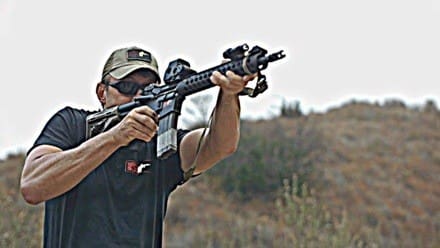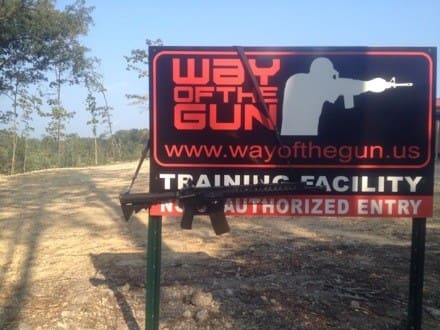Hey y’all here’s a topic that’s near and dear to my heart, setting up the carbine with everything you need and nothing you don’t! One very cool thing about the AR-15 platform is that it’s very modular, far too many times shooters add too many “light weight” accessories and end up with a less than optimal package. Here’s what I think the all purpose carbine needs no more no less.
Good Barrel
Having the ability to shoot 1.5-ish MOA or better with decent ammo and do so for a reasonable duration of fire and last a long time. I have found the BCM and Daniel Defense Hammer forged and chrome lined barrels to hold up better than anything else I’ve used and they provide around 1 MOA accuracy with MK 262. The new ELW bbl from BCM is quickly becoming a favorite, I’m looking forward to the hammer forged version. Also worth noting that I’m a fan of a 1-7 twist for everything and if the bbl is 14.5” or 16” then mid length gas system is the way to go. The difference in smoothness of the recoil impulse is very noticeable!
Rail
At least 9” in length, I think this is important to get leverage on the rifle. For an 11” bbl I would go with a 9 or 10” rail. For a 14.5” bbl I like a 13” rail. For a 16” bbl either a 13” or 15” rail. I’m a huge fan of the new KMR rails from BCM, super light without sacrificing any durability or function. I have also found that the KMR rail stays comfortable to the touch after extended shooting (I ran 3 mags through the gun pretty quickly to test this theory). The grip panels for the KMR help as well and they are super low profile.
Good Trigger
I like a trigger in the 3-3.5 pounds range and am a fan of a single stage trigger. I have used the following triggers with great results in performance and reliability. CMC, Wilson Combat and Geissele.
Pistol Grip
With a more straight up and down rake than a standard A2 pistol grip. I’m currently using the BCM Gunfighter Mod 2 grip and really like it the fact that it is modular also lending it to use by shooters of different hand size.
Charging Handle
I feel that and extended charging handle is beneficial in clearing malfunctions (if they occur) and working around a scope. I have used the Badger latch in the past but when BCM introduced the Gunfighter charging handle I switched and haven’t looked back! I’m running the Mod 4 on all my guns and dig it the most!
Muzzle Device
I’m a huge fan of having something on the end of the bbl that helps minimize the amount of time the gun is away from the target. There are some downsides to a very effective brake, usually they are pretty load and produce over pressure plus they can generate some serious flash. There are several MDs out there that offer some control and flash hiding capability and are fairly mild on the shooter. I have used the PWS and BCM Gunfighter devices a good bit and they both work pretty well. I’m also working on my own design that will provide a bit more control and not obnoxious over pressure, we’ll see how it goes!
Buttstock
I prefer light weight stock that fits tight to the buffer tube and locks up nice. I find that there is too much slop in the standard carbine stock. There are some choices out there that can get pretty heavy and bulky without really bringing anything else to the table. In the past I’ve used the Magpul CTR stock, the B5 SOPMOD stock and now the BCM Gunfighter stock as well as the Troy stock. The BCM is becoming my favorite due to tight fight, low profile and light weight.
Optic
There are many options in this category and based on what your needs are. Here are my opinions. If you are shooting from the muzzle to 200 yards irons are an excellent choice, very light and very close to red dot fast at those ranges. I shoot irons to 300 without any problems however at 300 the sights cover a lot of target and limit what you can see around the target. The red dot sights work very well from the muzzle to 300 yards. I dig the size, weight and battery life of the Aimpoint T1. I think the Eotech is the fastest red dot available a it has a bigger field of view and the large ring really pulls the eyes in. The 1 MOA dot in the Eotech is king at distance also. If you need to shoot small or past 300 yards a 1-4 or 1-6 or 8 power scope will really pay dividends. A couple things I look for there is true 1X, first focal plane on any thing past 1-4X, and a reticle set up in mils.
Light
Any rifle intended for duty or defensive use needs a light. I prefer something small and compact. I have used a Stream Light Protac 1L for a few years and it has worked very well. I’ve also used the Inforce WML and dig it as well. I’ve been very happy with lights in the 100 lumen range, to get much more than that you have to go to a bigger and bulkier light.
Sling
In my opinion and experience a 2 point adjustable sling is the way to go. In my opinion the single point sling keeps the stock of the rifle close to the shoulder and is slightly easier to transition to the opposite shoulder. I think that the 2 point adjustable is a much more usable design for really working with the carbine. Climbing, breaching, dragging or carrying things that require 2 hands are all easier if the rifle is cinched tight to the body or on your back. There are plenty of good options out there in the 2 point sling department but I’m kinda fond of my design!
I’m a huge fan of a light carbine and I think most dudes that have or do carry one for a living will agree. My current BCM carbine is set up with everything I think it needs to go to work (minus and IR laser for night vision work) and weights in at 6 pounds 3 ounces. I also have a carbine set up on a Tennessee Arms Polymer lower receiver that weighs in at 5 pounds 8 ounces, that’s with irons, light and sling. You can check out my guns on my Facebook page www.facebook.com/pages/Way-of-the-Gun. You can also go to my website www.wayofthegun.us.
Thanks for reading and I’ll catch y’all next time!
-Frank Proctor
Frank Proctor has served over 18 years in the military, the last 11 of those in US Army Special Forces. During his multiple combat tours in Afghanistan & Iraq he had the privilege to serve with and learn from many seasoned veteran Special Forces Operators so their combined years of knowledge and experience has helped him to become a better operator & instructor. While serving as an instructor at the Special Forces Advanced Urban Combat Course he was drawn to competitive shooting. He has since earned the USPSA Grand Master ranking in the Limited Division and Master ranking in the IDPA Stock Service Pistol division. He learned a great deal from shooting in competition and this has helped him to become to become a better tactical shooter. Frank is one of the few individuals able to bring the experiences of U.S. Army Special Forces, Competitive Shooting, and veteran Instructor to every class.
All this experience combines to make Frank Proctor a well-rounded shooter and instructor capable of helping you to achieve your goal of becoming a better shooter.
Gunfighter Moment is a weekly feature brought to you by Alias Training & Security Services. Each week Alias brings us a different Trainer and in turn they offer some words of wisdom.


















































































































